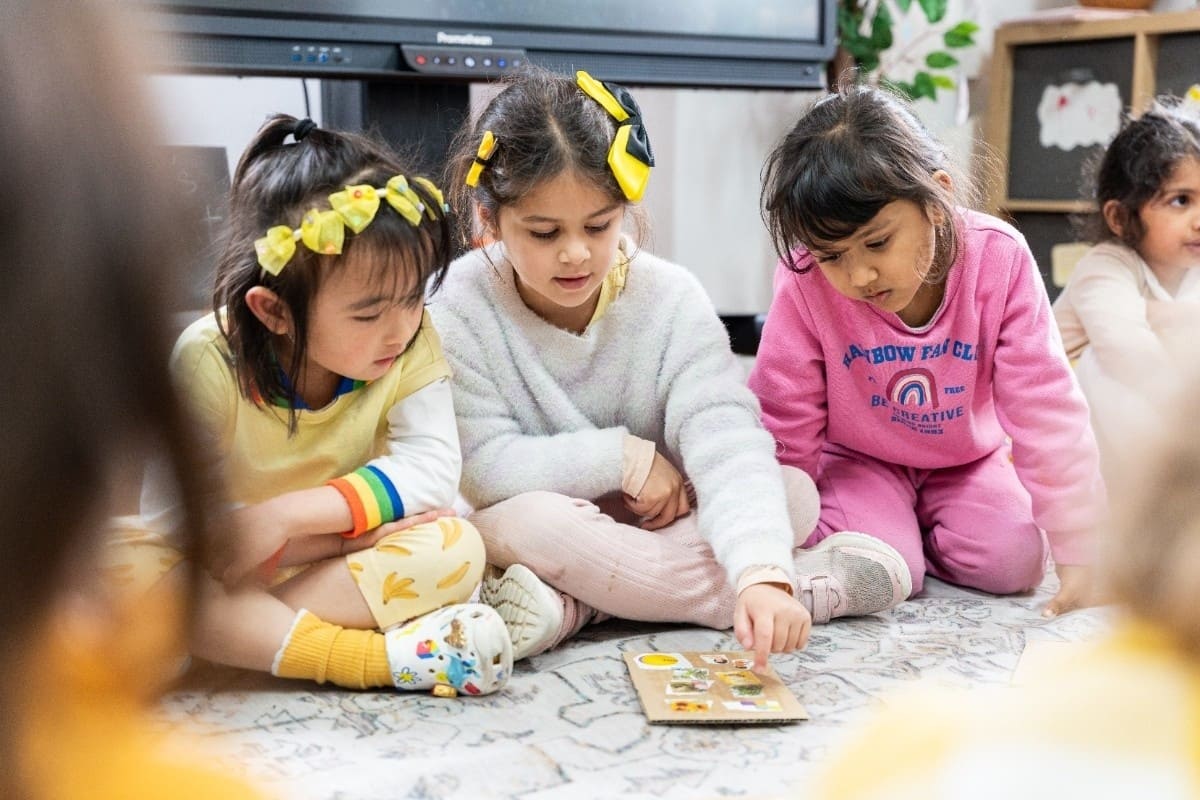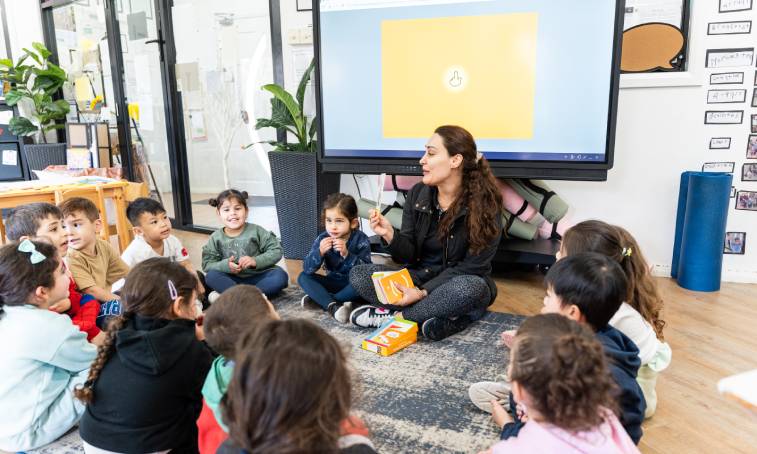Have you ever watched your child squish Play-Doh between their fingers or laugh as water splashes around them? That’s sensory play in action.
To parents, it can sometimes look messy or confusing. But beneath the giggles and spills, sensory play is doing important work.
At its core, sensory play is learning through the senses like touch, sound, sight, smell, taste, and movement. When children scoop rice, finger-paint, or balance on a beam, they’re building brain connections that support memory, creativity, and focus.
The key is that sensory play is active. Children aren’t just watching; they’re experimenting, exploring, and testing the world around them.
At Next Generation Kindergarten, sensory play is part of everyday learning. Guided by the Early Years Learning Framework (EYLF), we create experiences where children feel safe to explore with all their senses and turn simple play into meaningful growth.
Why Sensory Play Matters
Sensory play may look like fun and games, but it supports deep learning in ways parents often don’t see right away.
🗹 Cognitive growth: Activities like stacking, pouring, or sorting sharpen problem-solving skills and help children stay focused.
🗹 Motor development: Moulding clay, threading beads, or painting strengthens muscles in the hands and fingers, laying the groundwork for writing.
🗹 Emotional well-being: Calming sensory activities, such as water play or soft textures, help children manage big feelings and build resilience.
🗹 Social skills: Shared play experiences encourage teamwork, empathy, and the ability to navigate group settings with confidence.
In short, sensory play gives children the tools they need for both learning and living. Preparing them for school, relationships, and everyday challenges.
Sensory Play Ideas by Age
Not every activity suits every child, which is why we adapt sensory play to match developmental stages.
Babies and Toddlers
For the youngest children, play needs to be safe, simple, and exploratory. Soft rattles, textured fabrics, and sensory bottles filled with water and sparkles capture attention without overwhelm.
In our nurseries, we also use edible options like mashed fruit for finger play, so little ones can explore textures safely.
Toddlers
Toddlers are ready for bigger challenges. They love scooping rice, pouring water, or walking across different textures like bubble wrap or fabric squares. Music sessions with bells, drums, and shakers add rhythm and pattern recognition.
At NGK, we also introduce gentle taste and smell experiences from fresh fruit blends to mild herbs with parent guidance and safety in mind.
Preschoolers
Older children are ready to connect sensory play with more complex thinking. Activities like building with sand, experimenting with ice, or matching scents to stories encourage problem-solving and creativity.
Preschoolers also begin combining senses, like cooking simple recipes that involve touch, smell, and taste all at once. This makes learning deeply memorable.
Setting Up Sensory Play
One of the best things about sensory play is how simple it can be. Parents often think it requires fancy kits, but ordinary items can do the trick.
🗹 Household tools: Spoons, sponges, bowls, and rice can create endless variations.
🗹 Nature: Leaves, bark, shells, and stones bring in textures children rarely see indoors.
🗹 Cultural connections: Introducing herbs, spices, or traditional music helps children link sensory play with family identity and community.
At NGK, we rotate materials weekly to keep curiosity alive. Children stay engaged when the textures and tools around them change, and safety is always our priority with soft mats, spill-proof zones, and secure environments.
Sensory Play in Everyday Life

Busy families often ask: How do I fit sensory play into our routine without creating more mess?
The good news is that you don’t need extra hours or complicated setups. Small, consistent moments make the biggest difference.
🗹 During meals: Invite children to mash potatoes, stir batter, or smell herbs as you cook.
🗹 In the bath: Add sponges, foam, or sealed bags filled with different textures for safe exploration.
🗹 Outdoors: Parks, beaches, and gardens offer natural sensory experiences like sand between toes, leaves to crunch, or water to pour.
At NGK, we embed these moments into daily transitions. Whether it’s short water play after lunch or calming clay activities before rest time, sensory play is part of the natural flow of the day.
Supporting Every Child
Every child experiences the world differently. Some love bold colours and loud sounds, while others prefer quiet textures and gentle play.
At NGK, we design sensory environments that support both ends of that spectrum. Quiet corners with low lighting and soft textures help children who need calm. Group play areas encourage children who enjoy more energy and variety.
For children with diverse sensory needs, we focus on inclusivity. Adapted tools, patient guidance, and small group settings ensure every child feels comfortable engaging at their own pace.
Our educators watch closely, adjusting play when children show signs of overstimulation. This way, every experience remains safe, supportive, and positive.
Linking Sensory Play to Learning
It’s easy to think of sensory play as separate from “academic” learning. In reality, it’s the foundation for it.
🗹 Literacy: Handling books, tracing letters in sand, or clapping to rhythms prepares children for reading and writing.
🗹 Numeracy: Sorting objects by size or colour, pouring into different containers, or building with blocks introduces counting and patterns.
🗹 Creativity: Open-ended painting, clay sculpting, and musical play encourage self-expression and innovation.
This isn’t about pushing academics early. It’s about giving children the tools to learn naturally through play that sparks curiosity and joy.
The Role of Educators and Families
Children learn best when parents and educators work together.
At NGK, our educators model healthy sensory habits like washing hands, trying new textures, and showing excitement during play. When children see trusted adults enjoying these moments, they feel confident joining in.
Families play a central role, too. A simple activity at home, like a texture walk in the backyard or cooking together, reinforces what children explore in our centres. We share ideas with families, so the learning flows between school and home.
Lifelong Benefits Through Sensory Play
Sensory play may look simple, but the effects reach far beyond the moment. The squish of dough, the rhythm of music, or the crunch of leaves underfoot all help children sharpen focus, manage emotions, and spark creativity.
These experiences build resilience, problem-solving skills, and confidence – qualities that shape not only school readiness but also friendships, independence, and self-expression.
At Next Generation Kindergarten, we view every splash, giggle, and curious glance as part of this bigger picture. Our safe, engaging programs give children more than just playtime. They provide stepping stones for lifelong growth.
If you’d like to see sensory play in action, we’d love to welcome you. Book a tour at our Chester Hill centre and discover how we nurture children through meaningful, hands-on play.
FAQs
How much sensory play does my child need each day?
There’s no set time, but even 10–15 minutes of focused sensory play can make a difference. What matters most is consistency and variety over time.
Do I need to buy expensive sensory toys?
Not at all. Everyday items like rice, sponges, water, and safe kitchen tools can create meaningful sensory experiences. At NGK, we use simple, practical setups that families can try at home too.
Is messy play always part of sensory play?
No. Sensory play can be as tidy as sorting coloured buttons or exploring fabric textures. Messy play is one option, but not the only way.
Can sensory play help shy or anxious children?
Yes. Gentle sensory activities like water play, soft textures, or calming jars can create a safe space where children relax and build confidence at their own pace.
How do I know if my child is overstimulated?
Signs include withdrawing from play, covering ears or eyes, or becoming upset quickly. If this happens, try quieter textures, dimmer lighting, or shorter play sessions.
What if I don’t have much time for sensory play at home?
Involve your child in everyday tasks like cooking, gardening, or bath time, which naturally engage the senses. These small moments add up without needing extra time.





